Home
> 4D Maze Game
Download
|
The Idea
In the Maze
> Notes
Reference
The Fourth Dimension
Can You See It?
|
The Tesseract
The Tesseract, Part Two
The Hexadecachoron
|
How Much Space Is There?
|
> Rotations |
How to Orient Yourself
Volumes
Walls Are Opaque
|
Some Mathematics
Bibliography
Rotations
In the game, I've organized the possible rotations into two classes: turns, which change the forward direction, and spins, which don't.In three dimensions, there are four turns and two spins, but here I want to further organize them into pairs, with each pair representing a single type of rotation. Let's think of the space around us as being a cube, and look at left and right turns as an example. If we turn left, the top and bottom faces stay fixed (or, rather, rotate in place) while the left, front, right, and back faces move around in a loop; if we turn right, the only difference is that the loop turns the other way.
So, in three dimensions, there are two turn types and one spin type, as shown in the following pictures. The different rows show the loops and fixed faces for the different types.
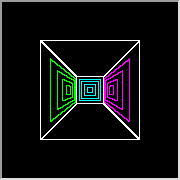
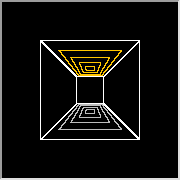
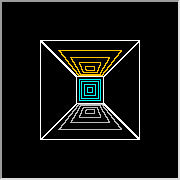
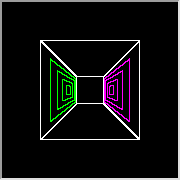
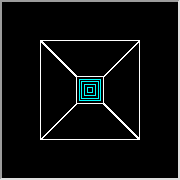
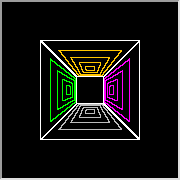
Now, here's a funny thing. In a three-dimensional rotation, there's always an axis (of rotation), and there are four faces (around the axis) that move in a loop plus two (along the axis) that stay fixed. So, in a four-dimensional rotation, you might think there would be six faces that move in a loop plus two that stay fixed, but in fact there are four faces that move in a loop plus four that stay fixed … and the latter form a second loop!
In fact, the whole “axis of rotation” idea is really just a misconception common to three-dimensional folk. Rotation naturally takes place in a plane, not along a line, and it's just an accident of three-dimensional geometry that every plane has a line orthogonal to it.
It's equally an accident of four-dimensional geometry that every plane has a plane orthogonal to it, but we can still use the fact to organize the rotations even further.
In four dimensions, there are three turn types and three spin types. Now, every turn type defines two loops, a moving one that includes the front face and a fixed one that doesn't; and in every case there is an orthogonal spin type that defines the same loops but in the opposite roles. As a result, the six rotation types can be organized into three rows.
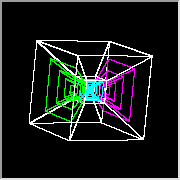
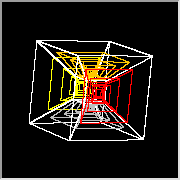
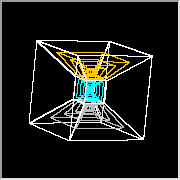
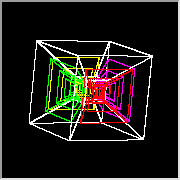
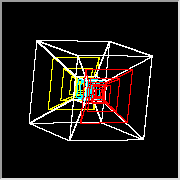
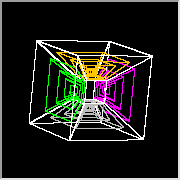
Now you can see why I swapped the last pair of three-dimensional pictures!
See Also
How Much Space Is There?
How to Orient Yourself
How to Point
Some Mathematics